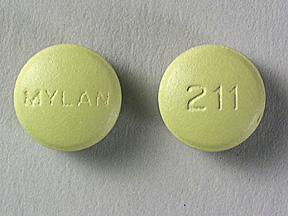
Chlordiazepoxide-amitriptyline Coupons & Savings Card – Discount Prices from $19.23
My prescription
Edit
5-12.5MG, Chlordiazepoxide-amitriptyline (30 Tablets)
Select pharmacy

CVS
$32.58
COUPON PRICE
Walgreens
$19.23
COUPON PRICE
Walmart
$20.79
COUPON PRICE
Albertsons
$40.01
COUPON PRICEChlordiazepoxide-amitriptyline savings card
Show this card to your pharmacist
Walgreens
$19.23
BIN
ID
PCN
GRP
015995
LHEX442447
GDC
GDRX
Powered by
More prescriptions for depression
More prescriptions for depression
Chlordiazepoxide-amitriptyline dosage forms
Dosage Quantity Price from Per unit 5-12.5MG 30 Tablets $20.79 $0.69 5-12.5MG 100 Tablets $74.60 $0.75 5-12.5MG 500 Tablets $269.00 $0.54 10-25MG 30 Tablets $37.13 $1.24 10-25MG 100 Tablets $108.80 $1.09 10-25MG 500 Tablets $440.00 $0.88
| Dosage | Quantity | Price from | Per unit |
|---|---|---|---|
| 5-12.5MG | 30 Tablets | $20.79 | $0.69 |
| 5-12.5MG | 100 Tablets | $74.60 | $0.75 |
| 5-12.5MG | 500 Tablets | $269.00 | $0.54 |
| 10-25MG | 30 Tablets | $37.13 | $1.24 |
| 10-25MG | 100 Tablets | $108.80 | $1.09 |
| 10-25MG | 500 Tablets | $440.00 | $0.88 |
Chlordiazepoxide-amitriptyline Warnings
This document provides essential safety information about the use of chlordiazepoxide and chlordiazepoxide/amitriptyline. It is crucial to understand the potential risks and take necessary precautions. Discuss with your healthcare provider if you have any concerns. Key points include:
Risk with Opioids: Combining these medications with opioids can lead to life-threatening effects, such as extreme drowsiness or respiratory failure. Avoid this combination unless under strict medical supervision. Seek emergency help if you experience difficulty breathing or extreme drowsiness after taking these medications.
Abuse and Dependence: Chlordiazepoxide/amitriptyline carries a high risk for abuse and dependence. Even if taken as prescribed, your body may become dependent. To reduce risks, limit use to short durations. Consult your healthcare provider before discontinuing, as abrupt cessation can cause serious withdrawal symptoms, including seizures.
Suicidal Thoughts: These medications can increase the risk of suicidal thoughts and behavior, particularly in individuals 24 years old or younger. Monitor for any changes in mood or behavior, especially during the initial months or after dosage adjustments, and report them to your healthcare provider immediately.
Bipolar Disorder: Depression symptoms may indicate bipolar disorder. Chlordiazepoxide/amitriptyline is not effective for bipolar disorder and may trigger manic episodes. Inform your doctor about your complete medical history and any family history of bipolar disorder before starting treatment.
Eye Concerns: These medications may cause eye-related side effects, particularly in individuals with glaucoma. Notify your healthcare provider if you have a history of eye problems or experience any changes in vision or eye discomfort.
Heart Risks: Chlordiazepoxide/amitriptyline, which includes a tricyclic antidepressant, can affect heart health, potentially leading to irregular heart rhythms or more severe conditions such as heart attacks or strokes. The risk is higher with large doses or existing heart conditions. Discuss any history of heart problems with your healthcare provider.
Contraindications: Avoid using these medications if you have taken a monoamine oxidase inhibitor (MAOI) in the past 14 days or have had a recent heart attack. Always consult your healthcare provider in these cases.
In the event of overdose symptoms such as slow or shallow breathing, severe drowsiness, or difficulty waking, seek immediate medical assistance. Do not stop taking these medications suddenly without medical advice to avoid potentially dangerous withdrawal symptoms.
Chlordiazepoxide-amitriptyline Side Effects
Common side effects:
- Drowsiness
- Dizziness
- Dry mouth
- Constipation
- Bloating
- Blurry vision
Less common but important to monitor:
- Vivid dreams
- Sexual dysfunction
- Shakiness
- Confusion
- Nasal congestion
Serious side effects:
- Extreme sleepiness
- Slowed breathing
- Suicidal thoughts
- Persistent heartburn
- Nausea or vomiting that doesn’t stop
- Easy bruising
- Changes in mental or mood state (including confusion or memory issues)
- Tremors
- Decreased sexual desire
- Symptoms of an infection (sore throat that doesn't go away or fever)
- Severe stomach pain
- Dark urine
- Yellowing of the skin or eyes
- Signs of an allergic reaction (rash, itching, or swelling)
Chlordiazepoxide-amitriptyline Interactions
Interactions with high risk of serious adverse effects and should be avoided:
- MAO inhibitors (isocarboxazid, Linezolid, phenelzine, etc.)
- Bepridil
- Cisapride
- Dronedarone
- Flumazenil
Interactions with moderate risk that may require dose adjustment, closer monitoring, or timing changes:
- Antiplatelet drugs (Clopidogrel)
- NSAIDs (Ibuprofen, Naproxen)
- Blood thinners (Dabigatran, Warfarin)
- Certain high blood pressure drugs (Clonidine, Guanabenz)
- Aspirin
- Cimetidine
- SSRIs (paroxetine, Sertraline)
- Quinidine
- Clonidine
- Clozapine
- Cigarette smoking
- Opioid pain relievers (codeine)
- Alcohol
- Drugs for anxiety or sleep (Alprazolam, Lorazepam, Zolpidem)
- Muscle relaxants (Carisoprodol, Cyclobenzaprine)
- Antihistamines (Cetirizine, diphenhydramine)
